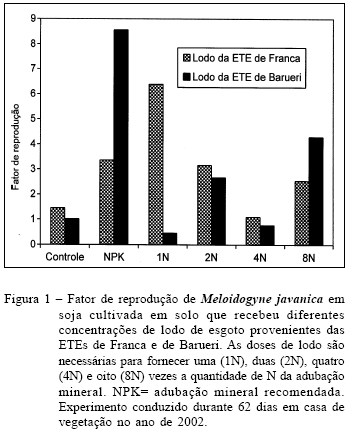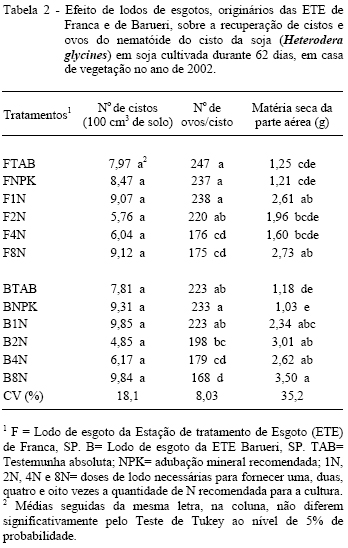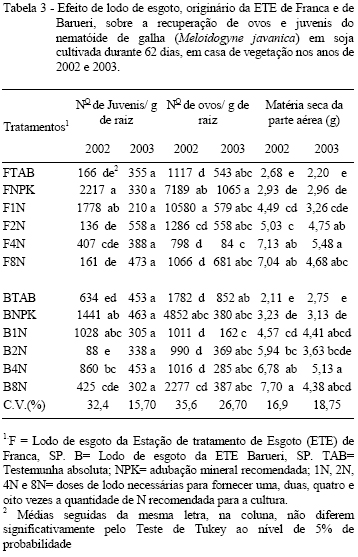Sewage sludge has shown great potential for use in agriculture, where it has been widely used. There are some modifications on chemical, physical and biological properties of the soil due to its composition of macro and micronutrients and organic substances. These alterations can provide benefits as an increase to the availability of nutrients to the plants, suppressiveness induction of soilborne plant pathogens and resistance to foliar diseases. However, it may influence negatively the biological and chemical balance in the soil, due to the presence of considerable amounts of available N, soluble salts and heavy metals. The aim of this work was to evaluate the effect of sewage sludge incorporation to the soil and the suppressiveness induction of nematodes (Meloydogine javanica (Treub) Chitwood and Heterodera glycines Ichinoe) in soybean (Glycine max L.). Experiments were performed in laboratory and in a greenhouse using collected soil in an experimental area of the Embrapa Meio Ambiente, Jaguariúna, SP. This area received successive applications of sewage sludge, originary from the sewage treatment of Barueri and Franca, in São Paulo State, Brazil, during five years (1998-2002). In relation to the suppressiveness induction of nematodes, the sludge did not affect significantly the development of H. glycines in the soil, but reduced the M. javanica reproduction, in the soybean root.
disease control; heavy metals; microbial activity; plant nutrition





